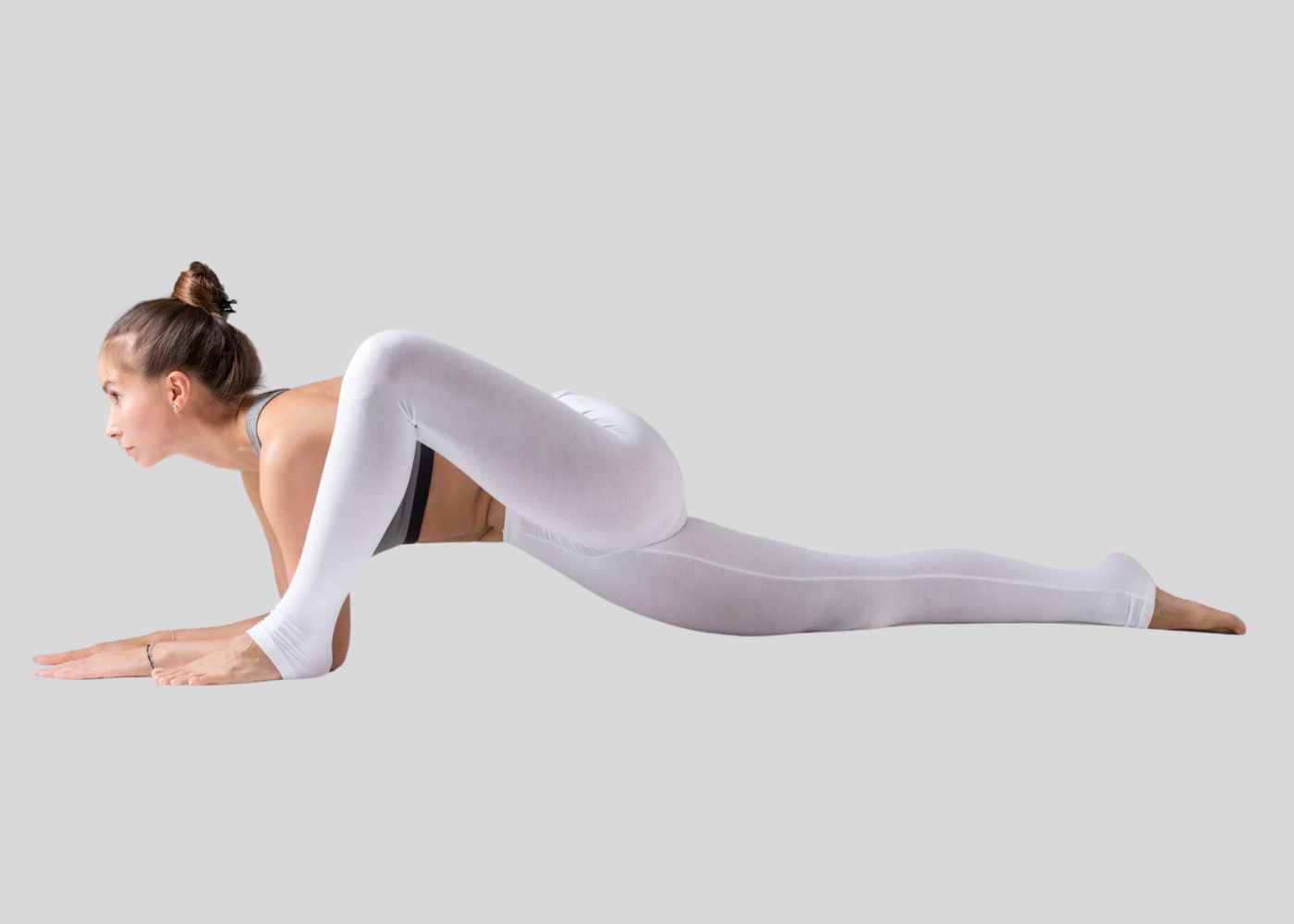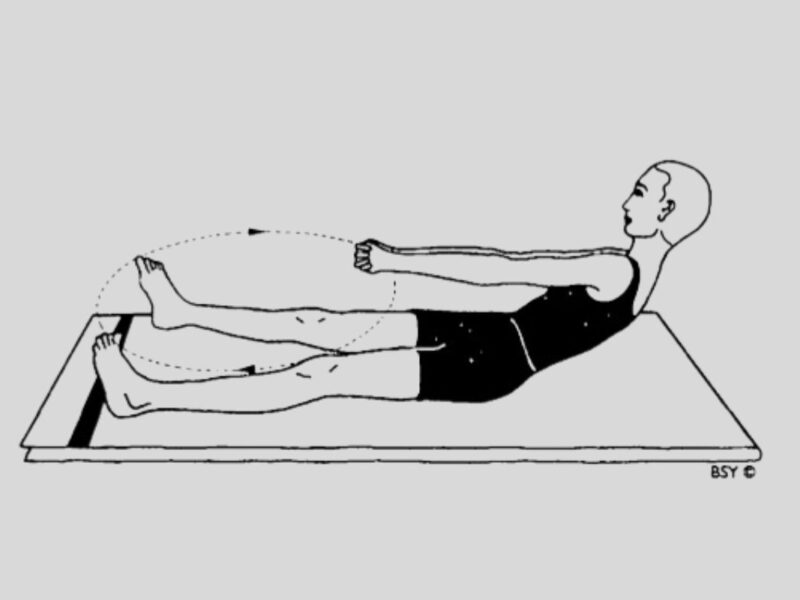Etymology: “Utthan” means rising, emphasizing the upward movement in the pose, while “Pristha” refers to the back.
Utthan Pristhasana, commonly known as Lizard Pose, is a dynamic yoga asana that focuses on strength and flexibility. Rooted in Hatha Yoga, Lizard Pose has ancient origins, promoting both physical and spiritual well-being. It encourages a connection between breath, movement, and energy flow, fostering balance in the body and mind. Integrating it into your practice can enhance overall flexibility and strength while providing a sense of grounding.
Preparation
To warm up and loosen your muscles, start with several rounds of classic sun salutations before delving into your lizard practice. Incorporate dynamic bridge poses and perhaps half frog pose to release the hip flexors. Half happy baby can also mimic the lizard-pose shape while lying down. Focus on warming up both the hips and quads.
Pose Instructions:
Begin in a lunge pose with your right leg forward and your left leg extended behind you. Lower your back knee to the ground, moving it slightly back to avoid putting direct pressure on the kneecap. Align your front knee directly over the ankle, engage your core, and elongate your spine. Place your right hand inside your right foot, then gently move your right foot to the right at a comfortable distance. You can angle your right toes outward or keep them forward, but ensure your kneecap aligns with your second and third toes to protect your knee. If your knee starts to turn outward, keep the ball of your right big toe grounded while drawing your inner right thigh toward your upper arm to maintain alignment. Keep your hands on the floor or supported by blocks to modify the stretch intensity.
Variation
- To decrease intensity, come onto your fingertips; to increase it, lower your forearms to the blocks or mat. Lengthen your sternum away from your waist and shift your left hip back slightly to prevent overstretching.
- Enhance the pose by tucking your back toes and extending through your back inner heel while lifting your knee off the ground. Keep your back leg strong by pressing the back of your thigh upward, widening the gap between your legs, and reaching your sternum forward. Maintain a long neck and gaze forward.
- For a restorative variation, keep your back knee down and use a bolster instead of blocks for support. A bolster may provide additional comfort to this pose. If needed, place a folded blanket under your back knee for extra cushioning.
Utilize props for support and never feel pressured to reach your forearms to the mat. Props can enhance your lizard pose experience, so embrace them. Using blocks allowed you to release hip tension and access greater ease in this pose.
Breathing:
Inhale while raising the buttocks (twice per round).
Exhale while lowering the buttocks (twice per round).
Duration:
Up to 10 rounds.
Awareness:
Physical: Focus on synchronizing movement with breath, and on the back or the region between the shoulder blades.
Spiritual: Direct awareness to Swadhisthana, Manipura, or Anahata chakra.
Sequence:
Perform after a forward-bending asana such as Paschimottanasana.
Benefits of Lizard Pose:
Lizard Pose, or Utthan Pristhasana, offers a range of physical and mental benefits:
- Hip Flexibility: The pose stretches and opens the hip flexors, groin, and hamstrings, improving flexibility in these areas.
- Hip Strength: It strengthens the hip muscles, including the adductors, abductors, and quadriceps.
- Improves Mobility: Regular practice enhances mobility and range of motion in the hips and legs.
- Stress Relief: Lizard Pose can help release tension and stress stored in the hips, promoting relaxation.
- Opens Chest and Shoulders: It encourages the opening of the chest and shoulders, counteracting the effects of prolonged sitting and computer work.
- Energetic Benefits: This pose can stimulate the lower chakras, promoting a sense of groundedness and stability.
- Core Engagement: Lizard Pose activates the core muscles, promoting stability and balance.
- Prepares for Deeper Hip Openers: It serves as a preparatory pose for deeper hip-opening postures like Pigeon Pose (Eka Pada Rajakapotasana).
- Improves Circulation: The stretch and engagement in this pose can enhance blood flow to the pelvic region.
Learn to know more about yoga poses so you can join yoga teacher training in rishikesh and 200 hour yoga teacher training in rishikesh and kundalini yoga teacher training in rishiksh and aerial yoga teacher training in rishikesh



